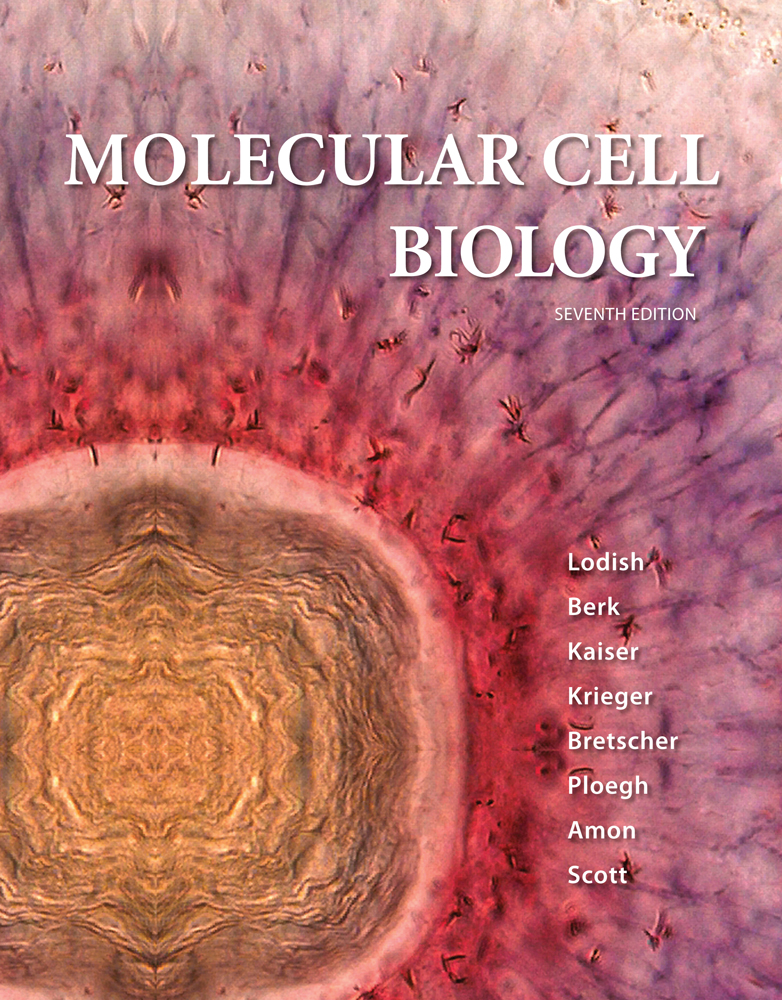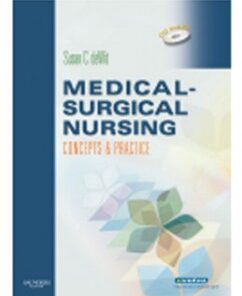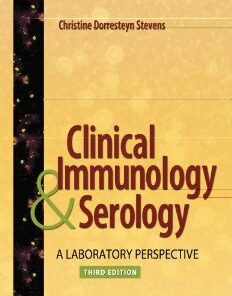Molecular Cell Biology Lodish 7th Edition Test Bank
$35.00
Molecular Cell Biology Lodish 7th Edition Test Bank
You will receive this product immediate after placing the order
Test Bank for Molecular Cell Biology, 7th Edition, Harvey Lodish, Arnold Berk, Chris A. Kaiser, Monty Krieger, Anthony Bretscher, Hidde Ploegh, Angelika Amon, Matthew P. Scott, ISBN-10: 142923413X, ISBN-13: 9781429234139
This is not a textbook or e-book version of the original text. Its called TEST BANK contains Multiple Choice Questions with Answers. All chapter’s Tests are available. Buyer will receive the download (File type: pdf/word/exl..etc) in his email as soon as transaction completed. Please download sample for your confidential.
Table of Contents
Chapter 1 Molecules, Cells, and Evolution
1.1 The Molecules of Life
1.2 Genomes, Cell Architecture, and Cell Function
1.3 Cells into Tissues–Unicellular and Metazoan Organisms
Used for Molecular Cell Biology Investigations
Chapter 2 Chemical Foundations
2.1 Covalent Bonds and Noncovalent Interactions
2.2 Chemical Building Blocks of Cells
2.3 Chemical Reactions and Equilibrium
2.4 Biochemical Energetics
Chapter 3 Protein Structure and Function
3.1 Hierarchical Structure of Proteins
3.2 Protein Folding
3.3 Protein Binding and Enzyme Catalysis
3.4 Regulating Protein Function
3.5 Purifying, Detecting, and Characterizing Proteins
3.6 Proteomics
Chapter 4 Basic Molecular Genetic Mechanisms
4.1 Structure of Nucleic Acids
4.2 Transcription of Protein-Coding Genes and Formation of
Functional mRNA
4.3 The Decoding of mRNA by tRNAs
4.4 Stepwise Synthesis of Proteins on Ribosomes
4.5 DNA Replication
4.6 DNA Repair and Recombination
4.7 Viruses: Parasites of the Cellular Genetic System
Chapter 5 Molecular Genetic Techniques
5.1 Genetic Analysis of Mutations to Identify and Study Genes
5.2 DNA Cloning and Characterization
5.3 Using Cloned DNA Fragments to Study Gene Expression
5.4 Locating and Identifying Human Disease Genes
5.5 Inactivating the Function of Specific Genes in Eukaryotes
Chapter 6 Genes, Genomics, and Chromosomes
6.1 Eukaryotic Gene Structure
6.2 Chromosomal Organization of Genes and Noncoding DNA
6.3 Transposable (Mobile) DNA Elements
6.4 Organelle DNAs
6.5 Genomics: Genome-wide Analysis of Gene Structure and Expression
6.6 Structural Organization of Eukaryotic Chromosomes
6.7 Morphology and Functional Elements of Eukaryotic Chromosomes
Chapter 7 Transcriptional Control of Gene Expression
7.1 Control of Gene Expression in Bacteria
7.2 Overview of Eukaryotic Gene Control
7.3 RNA Polymerase II and the General Transcription Factors Required for Initiation
7.4 Regulatory Sequences in Protein-Coding Genes and the Proteins Through Which They Function
7.5 Molecular Mechanisms of Transcription Repression and Activation
7.6 Regulation of Transcription-Factor Activity
7.7 Epigenetic Regulation of Transcription
7.8 Other Eukaryotic Transcription Systems
Chapter 8 Post-Transcriptional Gene Control
8.1 Processing of Eukaryotic Pre-mRNA
8.2 Regulation of Pre-mRNA Processing
8.3 Transport of mRNA Across the Nuclear Envelope
8.4 Cytoplasmic Mechanisms of Post-transcriptional Control
8.5 Processing of rRNA and tRNA
Chapter 9 Culturing, Visualizing, and Perturbing Cells
9.1 Growing Cells in Culture
9.2 Light Microscopy: Exploring Cell Structure and Visualizing
Proteins within Cells
9.3 Electron Microscopy: High-Resolution Imaging
9.4 Isolation and Characterization of Cell Organelles
9.5 Perturbing Specific Cell Functions
Chapter 10 Biomembrane Structure
10.1 The Phospholipid Bilayer: Composition and Structural
Organization
10.2 Membrane Proteins: Structure and Basic Functions
10.3 Phospholipids, Sphingolipids, and Cholesterol: Synthesis and Intracellular Movements
Chapter 11 Transmembrane Transport of Ions and Small Molecules
11.1 Overview of Transmembrane Transport
11.2 Facilitated Transport of Glucose and Water
11.3 ATP-Powered Pumps and the Intracellular Ionic Environment
11.4 Nongated Ion Channels and the Resting Membrane Potential
11.5 Cotransport by Symporters and Antiporters
11.6 Transcellular Transport
Chapter 12 Cellular Energetics
12.1 First Step of Harvesting Energy from Glucose: Glycolysis
12.2 Mitochondria and the Citric Acid Cycle
12.3 The Electron Transport Chain and Generation of the
Proton-Motive Force
12.4 Harnessing the Proton-Motive Force to Synthesize ATP
12.5 Photosynthesis and Light-Absorbing Pigments
12.6 Molecular Analysis of Photosystems
12.7 CO2 Metabolism During Photosynthesis
Chapter 13 Moving Proteins Into Membranes and Organelles
13.1 Targeting Proteins to and Across the ER Membrane
13.2 Insertion of Membrane Proteins into the ER
13.3 Protein Modifications, Folding, and Quality Control in the ER
13.4 Targeting of Proteins to Mitochondria and Chloroplasts
13.5 Targeting of Peroxisomal Proteins
13.6 Transport into and out of the Nucleus
Chapter 14 Vesicular Traffic, Secretion, and Endocytosis
14.1 Techniques for Studying the Secretory Pathway
14.2 Molecular Mechanisms of Vesicular Budding and Fusion
14.3 Early Stages of the Secretory Pathway
14.4 Later Stages of the Secretory Pathway
14.5 Receptor-Mediated Endocytosis
14.6 Directing Membrane Proteins and Cytosolic Materials to the Lysosome
Chapter 15 Signal Transduction and G Protein–Coupled Receptors
15.1 Signal Transduction: From Extracellular Signal to Cellular Response
15.2 Studying Cell-Surface Receptors and Signal Transduction Proteins
15.3 G Protein–Coupled Receptors: Structure and Mechanism
15.4 G Protein–Coupled Receptors That Regulate Ion Channels
15.5 G Protein–Coupled Receptors That Activate or Inhibit Adenylyl Cyclase
15.6 G Protein–Coupled Receptors That Trigger Elevations in Cytosolic Ca2+
Chapter 16 Signaling Pathways That Control Gene Expression
16.1 Receptors That Activate Protein Tyrosine Kinases
16.2 The Ras/MAP Kinase Pathway
16.3 Phosphoinositide Signaling Pathways
16.4 Receptor Serine Kinases That Activate Smads
16.5 Signaling Pathways Controlled by Ubiquitination:
Wnt, Hedgehog, and NF-kB
16.6 Signaling Pathways Controlled by Protein Cleavage:
Notch/Delta, SREBP
16.7 Integration of Cellular Responses to Multiple Signaling Pathways
Chapter 17 Cell Organization and Movement I:
Microfilaments
17.1 Microfilaments and Actin Structures
17.2 Dynamics of Actin Filaments
17.3 Mechanisms of Actin Filament Assembly
17.4 Organization of Actin-Based Cellular Structures
17.5 Myosins: Actin-Based Motor Proteins
17.6 Myosin-Powered Movements
17.7 Cell Migration: Mechanism, Signaling and Chemotaxis
Chapter 18 Cell Organization and Movement II:
Microtubules and Intermediate Filaments
18.1 Microtubule Structure and Organization
18.2 Microtubule Dynamics
18.3 Regulation of Microtubule Structure and Dynamics
18.4 Kinesins and Dyneins: Microtubule-Based Motor Proteins
18.5 Cilia and Flagella: Microtubule-Based Surface Structures
18.6 Mitosis
18.7 Intermediate Filaments
18.8 Coordination and Cooperation between Cytoskeletal Elements
Chapter 19 The Eukaryotic Cell Cycle
19.1 Overview of the Cell Cycle and its Control
19.2 Model Organisms and Methods to Study the Cell Cycle
19.3 Regulation of CDK Activity
19.4 Commitment to the Cell Cycle and DNA Replication
19.5 Entry into Mitosis
19.6 Completion of Mitosis: Chromosome Segregation and Exit from Mitosis
19.7 Surveillance Mechanisms in Cell Cycle Regulation
19.8 Meiosis: A Special Type of Cell Division
Chapter 20 Integrating Cells Into Tissues
20.1 Cell-Cell and Cell-Matrix Adhesion: An Overview
20.2 Cell-Cell and Cell-ECM Junctions and Their Adhesion Molecules
20.3 The Extracellular Matrix I: The Basal Lamina
20.4 The Extracellular Matrix II: Connective Tissue
20.5 Adhesive Interactions in Motile and Nonmotile Cells
20.6 Plant Tissues
Chapter 21 Stem Cells, Cell Asymmetry, and Cell Death
21.1 Early Metazoan Development and Embryonic Stem Cells
21.2 Stem Cells and Niches in Multicellular Organisms
21.3 Regulation of Asymmetric Cell Division
21.4 Cell Death and Its Regulation
Chapter 22 Nerve Cells
22.1 Neurons and Glia: Building Blocks of the Nervous System
22.2 Voltage-Gated Ion Channels and the Propagation of Action Potentials
22.3 Communication at Synapses
22.4 Sensing the Environment: Touch, Pain, Taste, and Smell
Chapter 23 Immunology
23.1 Overview of Host Defenses
23.2 Immunoglobulins: Structure and Function
23.3 Generation of Antibody Diversity and B-Cell Development
23.4 The MHC and Antigen Presentation
23.5 T Cells, T-Cell Receptors, and T-Cell Development
23.6 Collaboration of Immune-System Cells in the Adaptive Response
Chapter 24 Cancer
24.1 Tumor Cells and the Onset of Cancer
24.2 The Genetic Basis of Cancer
24.3 Cancer and the Misregulation of Growth Regulatory Pathways
24.4 Cancer and Mutation of Cell Division and Checkpoint Regulators
24.5 Carcinogens and Caretaker Genes in Cancer












Reviews
There are no reviews yet.